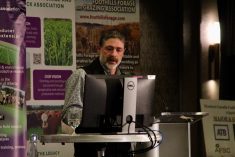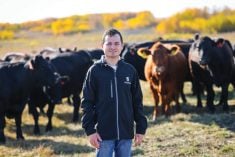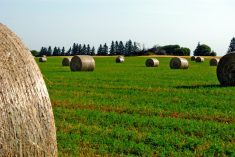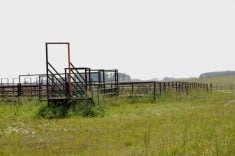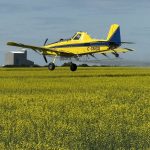Updated May 31, 2021.
The following is the first in a three-part series of articles exploring how different community pastures shifted from government to producer operation, and the ongoing effects of that shift. Future articles will focus on environmental and financial implications.
It’s been years since governments got out of community pastures. But the effects of those decisions still ripple through the lives of the people managing and using those pastures.
Read Also

Body condition, nutrition and vaccination for brood cows
One of the remarkable events of the past century related to ranching has been the genetic evolution of brood cows….
In 2012, the federal government announced the termination of its Community Pasture Program, a service that provided grazing for 220,000 cattle owned by 2,500 producer patrons across the Prairie provinces. The feds operated 24 pastures in Manitoba, 60 in Saskatchewan and one in Alberta through a division of Agriculture and Agri-Food Canada formerly known as the Prairie Farm Rehabilitation Administration (PFRA).* “The PF,” as many referred to it, had been in the community pasture game for 75 years. Many farm families and pasture staff had deep roots in the program.
Five years later, the Saskatchewan government announced they too would be winding down their provincial community pasture operations. Saskatchewan’s exit affected staff and patrons at 51 pastures that provided grazing for an estimated five per cent of the province’s cow herd.
“I knew that the province was on their way out once the PF went,” says Tyson McKenzie, a producer from Delisle, Sask. McKenzie is a third-generation patron in two former provincial and federal pastures.
Uncertainty lingers for producers and staff
For producers, the announcement of shutdowns had an immediate and strong impact, yet details were vague.
“You think the government could have come out with a better way and come to patrons first before you tell everyone through the media,” says McKenzie. “There wasn’t much of a consultation process.”
There was, however, a lot of speculation and rumours about what might happen.
“We went for a while thinking we would lose the pasture,” McKenzie says. In his area, patrons relied heavily on government pastures for grazing. Without them, many farmers would be scrambling to rent grass or be forced to downsize their herds.
“For us, all our cows go there, so it’s a matter of whether we have cows or not,” says Elbow/Willner patron Jared Manz. Manz is now a pasture board member as well.
“Our biggest concern was that we still would get to use the pasture,” Manz says. “Now the biggest thing is the cost.”

Several months after media announcements, governments put forward a staggered schedule that would see several federal pastures transition each year until all of them were producer-operated after the 2017 season. Saskatchewan pastures followed a similar plan and all pastures were shifted to full patron operation at the end of 2019.
The news that programs were axed was hard for pasture staff, who took pride in their unique jobs, which weren’t defined by set hours or tasks. “The big takeaway was that you are expendable. They can live without you,” says Terence Caumartin, manager of Narcisse and Sylvan Dale pastures in Manitoba.
On top of fears of losing their jobs, most staff lived in on-site accommodations, which meant added worry for their homes and families too. “When you were renting the facility, that announcement is kind of a big life change,” Caumartin says.
“I guess with the PF you always knew you had a job and when it transitioned you were half-worried about job security,” says Wyatt Ayers, who manages the Elbow/Willner pasture today.
What once had been a stable government job with benefits and pension all but disappeared. Maintaining employment was an immediate concern for staff, but on the flip side, finding qualified range riders and pasture managers has also become challenging for some pastures.
“With the end of the PF, they don’t make pasture cowboys anymore so it’s hard to find riders,” Ayers says.
Many experienced managers have retired and succession is a concern for many producers because the local knowledge that experienced pasture employees have is hard to match. Luke Ellingson, Monet pasture manager, says you can find someone who can manage the grass or manage the cattle, but few people have the specialized skillset to do both. Ellingson managed the federal pasture near Elrose, Sask., for five years before the transition, and has stayed on since.
“The thing I do miss is the training and the education that the PF did do for us,” Ellingson says. “We went to the grass seminars and the grazing events and had that opportunity.”
Now, there is a gap in range management and stockmanship development for riders and managers, and standardized safety training, all which used to be available at federal and provincial events.
Manitoba broke from the herd
Saskatchewan’s federal and provincial pastures set about transitioning independently, but Manitoba producers took a different approach. Barry Ross was a federally employed land manager overseeing pastures and staff at the time of the announcement. He says Manitoba Beef Producers pulled together existing patron committees to discuss a way forward with the Manitoba government.
“They decided they wanted to do an umbrella group and that was unanimous,” says Ross, who now heads up the new Association of Manitoba Community Pastures (AMCP).

Manitoba pastures had unique challenges before the transition, such as flooded acreage, that would cause fluctuations in carrying capacity and income from year to year. As well, some pastures struggled to fill allotments, making them less profitable.
“When I moved to Narcisse, we had a 1,000-head capacity and only 500 head apply,” Terence Caumartin says. He says being part of a larger group has benefits for operational stability. “What it comes down to is with the umbrella, we had a little more security for employees and patrons.”
They also have centralized administration, a safety committee and dedicated staff training opportunities. But the new structure did carry risks.
“The first year was the toughest. There were a lot of questions and doubt,” says Ross. They didn’t get a formal agreement with the Province of Manitoba until March of the first transition year’s grazing season, which created stress.
“We were talking to patrons and potential staff on spec,” Ross says. “It wasn’t easy pulling together all the interests to go with one idea.”
Four pastures eventually chose to operate on their own, leaving 20 pasture parcels in the AMCP group. But overall, the new organization has been effective.
“It’s been a people thing, that’s why it works,” Ross says. “We had good staff working for us out on the pastures.”
Ross notes that AMCP was able to keep most of the former employees. For many patrons, there was essentially no transition because they continued to bring cattle back to the same pasture staff they had always known and trusted.
“We had the same level of care and same transparency.”
Some bumps in the pasture trail
“It’s been a learning curve, but I think we’re only getting better,” says patron Tyson McKenzie about his experiences at Montrose and McDonald Creek pastures.
He notes their provincial pasture had upkeep issues going into the transition. “There was work to be done when we took (McDonald Creek) over,” he says.
In their first year of patron-operation, they needed to find water and were drilling a well by July. “There’s also been a lot of fence to fight with and rebuild and extra cost,” McKenzie says. “Every pasture has its own thing going, you’re always thinking about it.”

In hindsight, there were benefits to having the government handle operations. “Not that it’s been a huge issue but when the government was running it, things were more cut and dried,” McKenzie says.
Potentially contentious issues such as bull breeds, take-in or take-out dates, or how to accept new producers used to follow standard protocols. “Either you liked it or you left,” he says.
Now that it’s patron-run, the pasture board has to be prepared to be accountable and take the heat.
“When you’re on the board you find out what people really think,” McKenzie says. “Everyone wants their say, but things have to be voted on and you can’t please everybody,” he adds.
Barry Ross says that Manitoba tried to follow the PFRA model closely, helping ensure that there is an opportunity for new pasture entrants.
“It helps to keep local politics out of it,” he says, noting that the original intent of community pastures was to provide grazing for local farmers.
For Jared Manz, things at Elbow/Willner pasture have gone well post-transition from his perspective. “I don’t think it changed a whole bunch,” he says.
Like many pastures, their group initially lost a few patrons, perhaps out of concern with how the transition would go. “Now that it has went well, maybe they wish they stayed in,” Manz says.
Luke Ellingson says the Monet transition has gone smoothly and he’s noticed a positive shift in producer awareness. When it was run by the government, he says, “patrons didn’t really have a say and they sent the cows and took them home, that was it.” Patrons have got a little more insight into what’s involved now, Ellingson says.
“As far as how much the transition has affected us and the community, our pasture hasn’t really changed much.” It’s still a community pasture, Ellingson says, and it’s still here.
Despite the initial turmoil, Terence Caumartin agrees that the landscapes have persevered. “With the way the world is going, I think there will be some big benefits for open grassland,” he says, citing carbon sequestration as an opportunity to keep pastures and grasslands intact.
“The pastures aren’t going anywhere, I don’t think.”
*The article originally stated that Saskatchewan had 80 community pastures, but the correct number is 60 (notwithstanding pastures that ran two blocks). Many thanks to the sharp-eyed reader who brought it to our attention.





